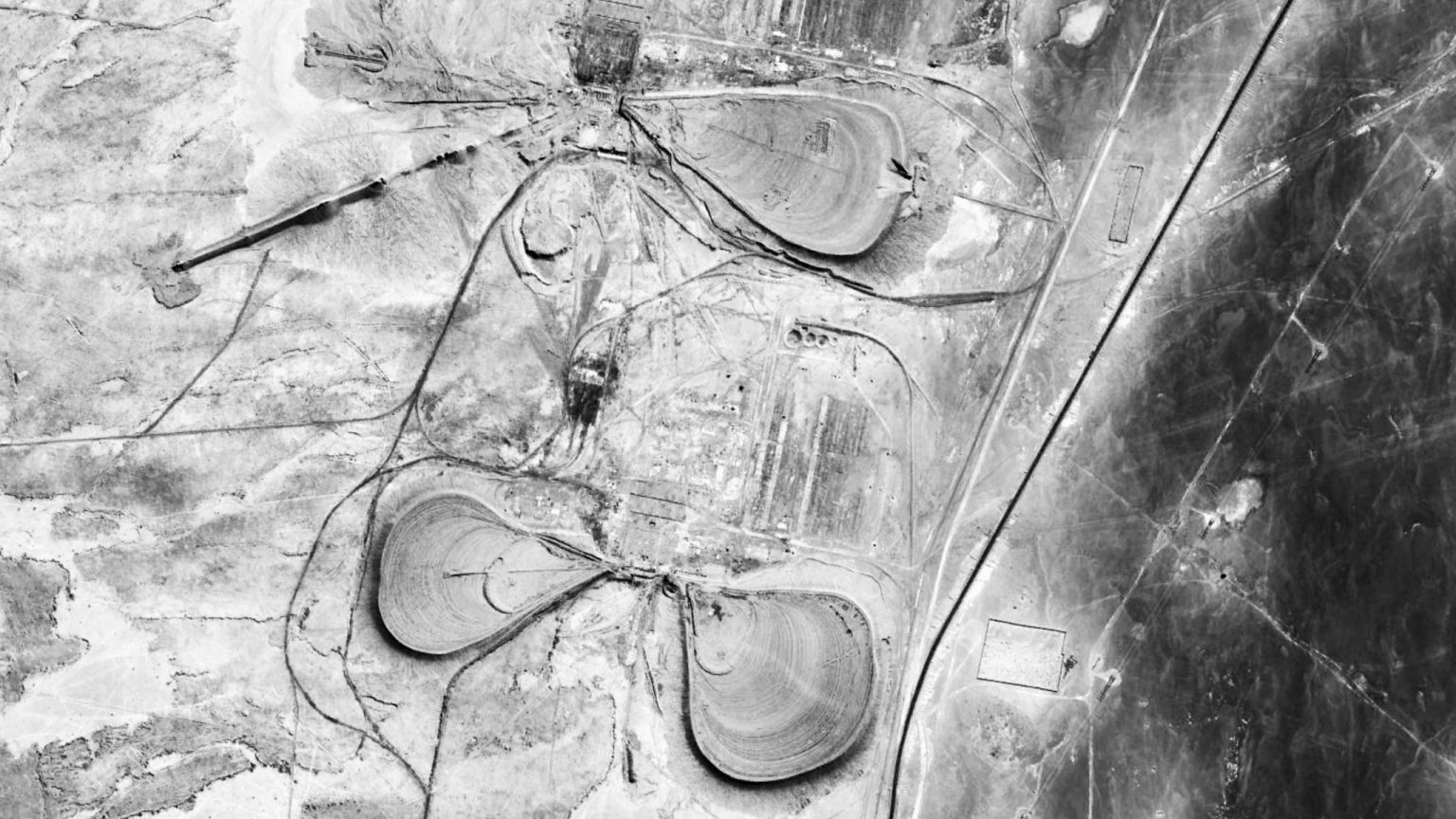Trabajo de Oficina. Atacama / Hamburgo

Aerial view of Oficinas Rica Aventura and Oficina Prosperidad, nitrate extraction sites in the Atacama Desert, Chile. Source: Google Earth
Trabajo de Oficina. Atacama / Hamburgo [Office Work. Atacama / Hamburg] is a research exhibition that will be presented at Centro Cultural la Moneda (CCLM) in Santiago de Chile in September 2024.
The Atacama Desert cannot forget. Dry, salty, wrinkled, and silent, everything and anything that ever touched its surface is condemned to eternal memory. The desert cannot forget. Being the driest place on earth, over millions of years, pulverised dinosaur bones, fossilised bird excrements, stardust, and the reminiscence of a long-extinct marine life have been accumulating on its surface. When walking over its wrinkled crust, one walks on the surfaces of a millenary archive that, due to the lack of rain and precipitations, has stored everything that the rest of the planet has decided to forget. It has been the exploitation of that millenary archive that has boosted modernity. First, the nitrates of the salty ground were turned into saltpetre to fertilise the European soils; Europe as we know it would not exist without the alchemic transformation of nitrates into food. But later, it was copper from the very same ground that allowed for the electrification of the planet, and it is now lithium that feeds the phones and computers that enableus to communicate. Paradoxically, it is the soil of the driest and most uninhabitable place on earth that has fertilised modern life on this planet, both biological and technological. But the desert cannot forget, and its surface has stored, as if they were drawings, the traces of the human violence needed for the exploitation of that very soil and on that very ground. This exhibitionaims to use architecture to interrogate the drawings and traces left in the Atacama Desert. Even if these stories have long been invisible, the desert cannot forget.
The exhibition will feature recent research developed by the laboratory on the relationship between the Hamburg Chilehaus—designed by Fritz Höger and completed in 2024—and the early twentieth-century saltpetre mining industry in the Atacama Desert in Chile. On the 100th anniversary of the completion of this most iconic of German modernist buildings—the first office block in Hamburg’s downtown and one of the city’s very first high-rises—the exhibition examines an alchemical transubstantiation, namely, the transformation of the capital accumulated after decades of saltpetre mining in the Atacama Desert into office real state and brick expressionism in Hamburg.